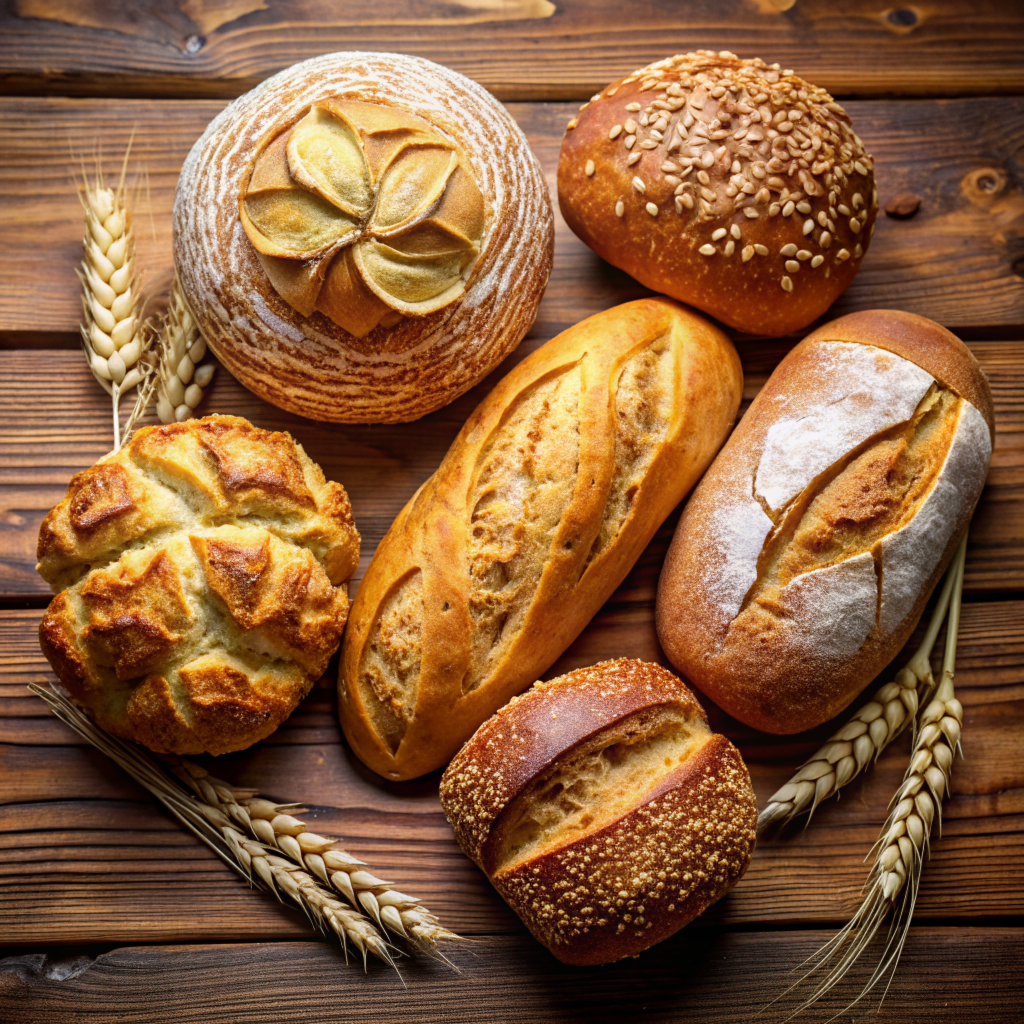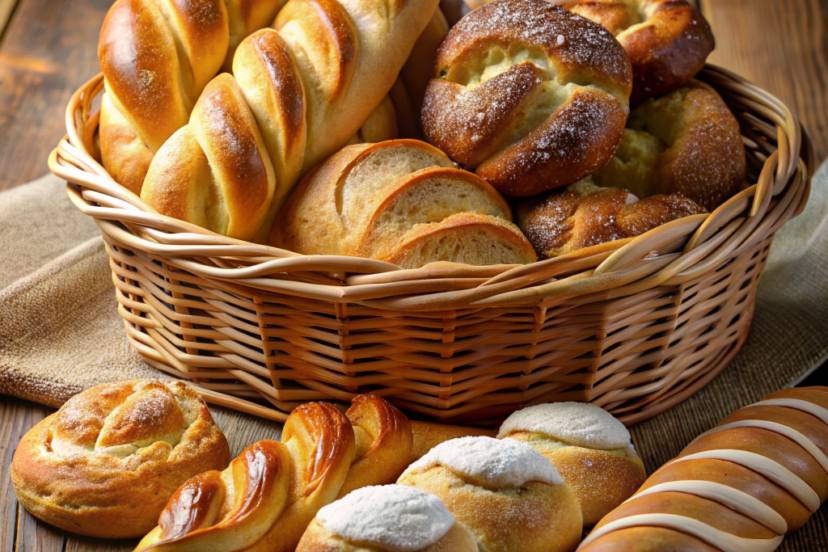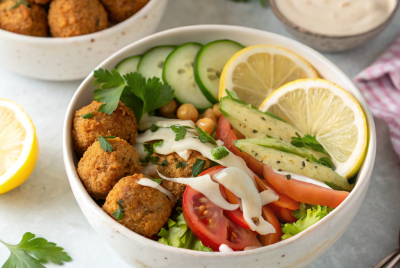Easy Dairy Free Bread Recipes (Gluten-Free Option)
Hey there! I have to tell you about my recent adventure in the kitchen that changed my bread-baking game forever. It all started when my friend Sarah, who is lactose intolerant, mentioned how much she missed eating homemade bread. Determined to surprise her with a delicious, dairy-free loaf, I embarked on a journey to perfect the art of dairy-free bread baking. Along the way, I discovered some fantastic recipes and tips I can’t wait to share with you. Whether you’re lactose intolerant, following a vegan diet, or simply trying to avoid dairy products, these recipes are for you. Let’s explore some easy bread recipes you can replicate at home!
My Journey to Dairy-Free Baking
One sunny afternoon, I invited Sarah over for dinner. As I was planning the menu, I realized that most of my go-to bread recipes contained dairy. I wanted to create something special for her, so I began experimenting with dairy-free ingredients. After a few attempts, I finally nailed it! The look on Sarah’s face when she took her first bite of my homemade dairy-free bread was priceless. That moment inspired me to continue exploring and perfecting dairy-free bread recipes. Now, I’m thrilled to share my favorites with you. (Thanks to Sarah!)
Dairy-Free Bread – What You Need To Know
Lactose Intolerance
Lactose intolerance affects many people, making it difficult for them to digest dairy products. By opting for dairy-free bread, you can enjoy delicious baked goods without any discomfort.
Benefits of a Dairy-Free Diet
A dairy-free diet can improve digestion, boost energy levels, and even clear up your skin. Plus, it’s a fantastic way to discover new flavors and ingredients.
Essential Ingredients for Dairy-Free Bread
Substituting Dairy Products
When it comes to baking dairy-free bread, the best way to replace dairy ingredients is by using non-dairy milk like almond milk, soy milk, or coconut milk. Olive oil is a great substitute for butter, and there are plenty of other plant-based alternatives to explore.
Plant-Based Alternatives
Non-dairy milk options such as oat milk, rice milk, and almond milk add unique flavors and textures to your bread. Experiment with different types to find your favorite.
Easy Dairy-Free Bread Recipes
1. Classic Dairy-Free White Bread
Ingredient List:
• 3 cups all-purpose flour
• 1 packet active dry yeast
• 1 tsp salt
• 1 tbsp sugar
• 1 cup warm water
• 2 tbsp olive oil
• 1/2 cup almond milk (room temperature)
Instructions:
1. In a large bowl, mix the dry ingredients.
2. Add warm water, olive oil, and almond milk to the dry mixture.
3. Knead the bread dough until smooth.
4. Let the dough rise in a warm place for 1 hour (first rise).
5. Shape into a loaf and place in a greased loaf pan.
6. Allow a second rise for 30 minutes.
7. Bake at 375°F for 25-30 minutes until golden brown.
2. Gluten-Free Bread
Ingredient List:
• 2 cups gluten-free flour blend
• 1 packet instant yeast
• 1 tsp salt
• 2 tbsp sugar
• 1 cup warm water
• 2 tbsp olive oil
• 2 egg whites (room temperature)
Instructions:
1. Combine dry ingredients in a large bowl.
2. Add warm water, olive oil, and egg whites.
3. Use a dough hook to mix until smooth.
4. Let the dough rise for 1 hour.
5. Shape and place in a loaf pan.
6. Let rise for another 30 minutes.
7. Bake at 350°F for 30-35 minutes until the top is golden brown.
3. Vegan Whole Wheat Bread
Ingredient List:
• 3 cups whole wheat flour
• 1 packet active dry yeast
• 1 tsp salt
• 2 tbsp sugar
• 1 cup warm water
• 2 tbsp olive oil
• 1/2 cup oat milk (room temperature)
Instructions:
1. Mix dry ingredients in a large bowl.
2. Add warm water, olive oil, and oat milk.
3. Knead the dough until smooth.
4. Let rise for 1 hour.
5. Shape and place in a loaf pan.
6. Allow for a second rise for 30 minutes.
7. Bake at 375°F for 25-30 minutes.
Find more plant-based recipes here.
4. Keto Bread
Ingredient List:
• 2 cups almond flour
• 1 packet instant yeast
• 1 tsp salt
• 2 tbsp psyllium husk powder
• 4 large eggs
• 1/4 cup coconut oil, melted
• 1/2 cup warm water
Instructions:
1. Combine dry ingredients in a bowl.
2. Add eggs, coconut oil, and warm water.
3. Mix until a dough forms.
4. Shape into a loaf and place in a loaf pan.
5. Let rise for 1 hour.
6. Bake at 350°F for 45-50 minutes until golden brown.
For more ideas about keto breads and desserts, check this.
5. Bread for Diabetics
Ingredient List:
• 2 cups Ezekiel bread flour (or sprouted grain flour)
• 1 packet active dry yeast
• 1 tsp salt
• 1 tbsp honey
• 1 cup warm water
• 2 tbsp olive oil
Instructions:
1. Mix dry ingredients in a bowl.
2. Add honey, warm water, and olive oil.
3. Knead the dough until smooth.
4. Let rise for 1 hour.
5. Shape and place in a loaf pan.
6. Allow for a second rise for 30 minutes.
7. Bake at 375°F for 25-30 minutes.
My Tips for Perfect Dairy-Free Bread
Getting the Right Texture
Achieving the perfect texture in dairy-free bread can be tricky. Using simple ingredients like olive oil and non-dairy milk helps keep the bread moist and flavorful.
Ensuring Proper Dough Rise
For a successful dough rise, make sure your yeast is fresh and the water is at the right temperature—warm, not hot. A warm, draft-free place is ideal for letting your dough rise.
Choosing the Best Substitutes
To replace cow’s milk, experiment with different non-dairy milks like soy milk, almond milk, and oat milk to see which flavor and texture you prefer in your bread.
Exploring Different Types of Bread
Sourdough Bread
Sourdough bread is naturally dairy-free and has a delightful tangy flavor. Making your own sourdough starter is a fun project that yields amazing results.
French Bread
French bread, with its crisp crust and soft interior, is another fantastic option. Use non-dairy milk to achieve the perfect texture.
Quick Bread
Quick bread is perfect for those who are short on time. It doesn’t require yeast or rising time, making it a quick and easy bread recipe.
I will provide these recipes in a future post, make sure not to miss it!
Variations to Try
Adding Flavors
Experiment with adding different flavors to your bread, such as herbs, garlic, or even dried fruits. The possibilities are endless!
Different Shapes
Don’t be afraid to shape your bread differently. Try making rolls, baguettes, or even braids for a unique twist.

Using Whole Foods
Incorporating whole foods like nuts, seeds, and whole grains into your bread is a great way to add nutrition and texture.
Homemade Bread: A Labor of Love
Baking homemade bread is truly a labor of love. The smell of fresh bread baking in the oven is unbeatable, and knowing that it’s dairy-free makes it even better. Plus, homemade bread doesn’t contain the preservatives and additives found in bread bought at the grocery store, making it a healthier option.
End words
Making dairy-free bread is a rewarding and delicious endeavor. Whether you’re dealing with lactose intolerance, following a vegan lifestyle, or just looking for healthier options, there’s a dairy-free bread recipe out there for you. Remember to have fun with the process, experiment with different ingredients, and enjoy the fruits of your labor. There is no excuse now not to bake your own bread. Happy baking!
FAQs
1. Can I use any non-dairy milk in these recipes?
Sure! Feel free to use almond milk, soy milk, oat milk, or any other non-dairy milk you prefer.
2. How can I make my bread gluten-free?
Use a gluten-free flour blend and follow the gluten-free bread recipe provided above. Ensure all your ingredients are gluten-free.
3. What if I don’t have a dough hook?
You can knead the dough by hand. It might take a bit longer, but it works just as well.
4. Can I freeze dairy-free bread?
Yes, you can freeze it. Slice the bread first, then wrap it tightly in plastic wrap and place it in a freezer bag.
5. How do I know when the bread is done baking?
The bread is done when it’s golden brown and sounds hollow when tapped on the bottom. You can also use a thermometer; the internal temperature should be around 190-200°F.




